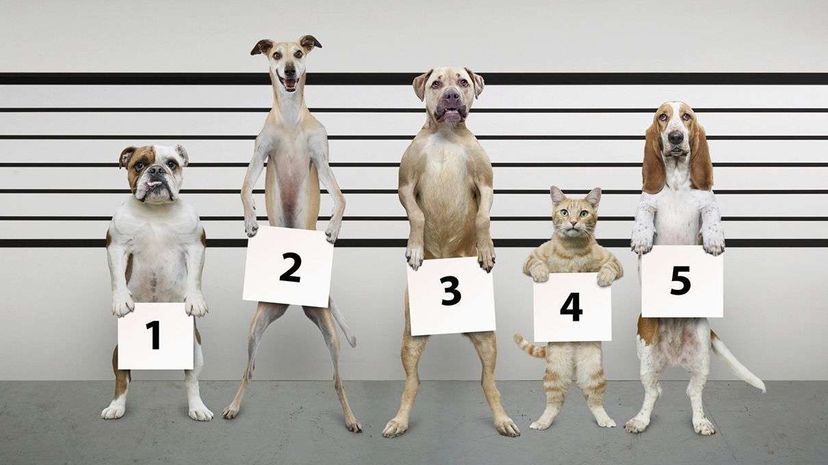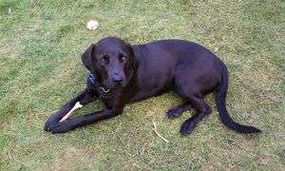
When you see a dried bull penis in a pet store, you might not realize that's what you're considering buying as your dog's newest chew. Instead, the dried sex organs are probably labeled "bully stick" or "pizzle." Pizzle comes from the Low German word for penis, "pesel,"which was used to refer to the penis of animals, usually that of a bull. Maybe you're already up to date on bull penis lingo, but do most people know what they are buying? Why are the shops uncomfortable calling something, well, what it actually is?
When a bull is processed for its meat, the penis is a byproduct that can be repurposed for other uses like chews for dogs. A bull penis typically measures about 25 inches (63.5 centimeters) long. After it is removed and cleaned, it's usually hung vertically to drain, then stretched and twisted while it dries. Sometimes the penis also goes through a curing and smoking process. The final stage of turning a bull penis into a chew toy occurs when the penis — now at about 40 inches (101.6 centimeters) long — is cut into dog-appropriate pieces.
Advertisement
A team at Tufts University and the University of Guelph decided to find out just how much the average person knows about bull penis chew toys. In 2013, they asked 852 dog owners to complete a 20-question survey about a popular pet chew toy commonly known as a bully stick. Of the respondents, who hailed from 44 states and six countries, only 44 percent knew a bully stick was actually a bull penis. Somewhat surprisingly, there wasn't a clear consensus among veterinarians, either. In fact, 38 percent of veterinarians polled in the survey didn't know that bully sticks were bull penises, either.
So if other animal parts with anatomically correct labeling — chicken gizzards, pig ears and snouts, lamb esophaguses, etc. — are showing up on the shelves of natural pet stores eager to minimize animal waste, why are producers and pet stores so afraid to call a penis a penis? It probably has to do with a prevailing sense of modesty in American culture, one that's so off-kilter that people refer to their own private parts as wee-wees and hoo-hoos, even to medical professionals.
"Companies can benefit from being a bit vague in their marketing and packaging," says "Make Yourself Marketable" author, Branding Muse founder and marketing expert Emmelie De La Cruz, "because of the emotional and psychological connections people make with words, descriptions and presentations. Think about it this way: would you want to imagine your beloved animal chewing on that specific animal part? Probably not. Leaving information like this out helps people have a more positive association with the product, and therefore be more likely to purchase."

When it comes to bull penises your dog probably won't care what you call them. That said, you may want to exercise restraint when offering them as treats. Researchers from Tufts University examined 26 bully sticks and found that several of the treats were contaminated. Seven of the bully sticks contained the bacteria E. coli. One bully stick had Clostridium difficile, bacteria that can cause easily spread and potentially cause fatal colon inflammation. There also was a bull penis chew toy contaminated with MRSA, a type of staph bacteria that has become resistant to most antibiotics.

Additionally, Tufts researchers found bully sticks to be high in calories, ranging from 9 to 22 calories per inch. And, because most of the dried bull-penis chews are cut to about six inches (15.24 centimeters) long, eating just one could equal 30 percent of the recommended daily caloric intake for small dogs (up to 10 pounds or 4.5 kilograms). A bully stick would account for about 9 percent of the recommended daily calories for large dogs (50 pounds or 22 kilograms).
"With obesity in pets on the rise, it is important for pet owners to factor in not only their dog's food, but also treats," says researcher Lisa Freeman, a professor of nutrition at Cummings School of Veterinary Medicine at Tufts University in a statement about the study, which was published in the January 2013 issue of the Canadian Veterinary Journal.
Advertisement

